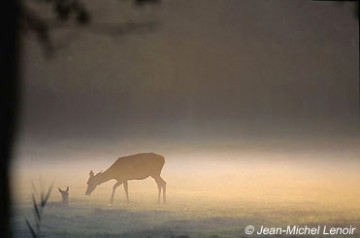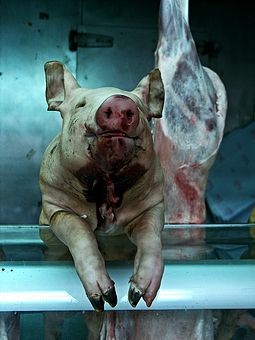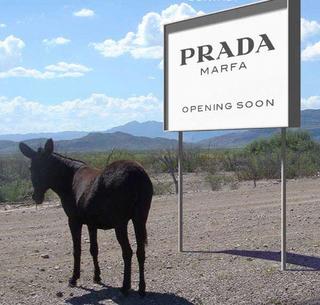Humans are undoubtedly the most dominant species the Earth has ever known. In just a few thousand years we have swallowed up more than a third of the planet's land for our cities, farmland and pastures. By some estimates, we now commandeer 40 per cent of all its productivity. And we're leaving quite a mess behind: ploughed-up prairies, razed forests, drained aquifers, nuclear waste, chemical pollution, invasive species, mass extinctions and now the looming spectre of climate change. If they could, the other species we share Earth with would surely vote us off the planet.
“15,589 Number of species threatened with extinction”
Now just suppose they got their wish. Imagine that all the people on Earth - all 6.5 billion of us and counting - could be spirited away tomorrow, transported to a re-education camp in a far-off galaxy. (Let's not invoke the mother of all plagues to wipe us out, if only to avoid complications from all the corpses). Left once more to its own devices, Nature would begin to reclaim the planet, as fields and pastures reverted to prairies and forest, the air and water cleansed themselves of pollutants, and roads and cities crumbled back to dust.
"The sad truth is, once the humans get out of the picture, the outlook starts to get a lot better," says John Orrock, a conservation biologist at the National Center for Ecological Analysis and Synthesis in Santa Barbara, California. But would the footprint of humanity ever fade away completely, or have we so altered the Earth that even a million years from now a visitor would know that an industrial society once ruled the planet?
“9.7 Average eco-footprint of a US citizen, in hectares”
If tomorrow dawns without humans, even from orbit the change will be evident almost immediately, as the blaze of artificial light that brightens the night begins to wink out. Indeed, there are few better ways to grasp just how utterly we dominate the surface of the Earth than to look at the distribution of artificial illumination (see Graphic). By some estimates, 85 per cent of the night sky above the European Union is light-polluted; in the US it is 62 per cent and in Japan 98.5 per cent. In some countries, including Germany, Austria, Belgium and the Netherlands, there is no longer any night sky untainted by light pollution.
“18.7 Percentage of Earth's surface affected by light pollution”
"Pretty quickly - 24, maybe 48 hours - you'd start to see blackouts because of the lack of fuel added to power stations," says Gordon Masterton, president of the UK's Institution of Civil Engineers in London. Renewable sources such as wind turbines and solar will keep a few automatic lights burning, but lack of maintenance of the distribution grid will scuttle these in weeks or months. The loss of electricity will also quickly silence water pumps, sewage treatment plants and all the other machinery of modern society.
The same lack of maintenance will spell an early demise for buildings, roads, bridges and other structures. Though modern buildings are typically engineered to last 60 years, bridges 120 years and dams 250, these lifespans assume someone will keep them clean, fix minor leaks and correct problems with foundations. Without people to do these seemingly minor chores, things go downhill quickly.
The best illustration of this is the city of Pripyat near Chernobyl in Ukraine, which was abandoned after the nuclear disaster 20 years ago and remains deserted. "From a distance, you would still believe that Pripyat is a living city, but the buildings are slowly decaying," says Ronald Chesser, an environmental biologist at Texas Tech University in Lubbock who has worked extensively in the exclusion zone around Chernobyl. "The most pervasive thing you see are plants whose root systems get into the concrete and behind the bricks and into doorframes and so forth, and are rapidly breaking up the structure. You wouldn't think, as you walk around your house every day, that we have a big impact on keeping that from happening, but clearly we do. It's really sobering to see how the plant community invades every nook and cranny of a city."
With no one to make repairs, every storm, flood and frosty night gnaws away at abandoned buildings, and within a few decades roofs will begin to fall in and buildings collapse. This has already begun to happen in Pripyat. Wood-framed houses and other smaller structures, which are built to laxer standards, will be the first to go. Next down may be the glassy, soaring structures that tend to win acclaim these days. "The elegant suspension bridges, the lightweight forms, these are the kinds of structures that would be more vulnerable," says Masterton. "There's less reserve of strength built into the design, unlike solid masonry buildings and those using arches and vaults."
But even though buildings will crumble, their ruins - especially those made of stone or concrete - are likely to last thousands of years. "We still have records of civilisations that are 3000 years old," notes Masterton. "For many thousands of years there would still be some signs of the civilisations that we created. It's going to take a long time for a concrete road to disappear. It might be severely crumbling in many places, but it'll take a long time to become invisible."
The lack of maintenance will have especially dramatic effects at the 430 or so nuclear power plants now operating worldwide. Nuclear waste already consigned to long-term storage in air-cooled metal and concrete casks should be fine, since the containers are designed to survive thousands of years of neglect, by which time their radioactivity - mostly in the form of caesium-137 and strontium-90 - will have dropped a thousandfold, says Rodney Ewing, a geologist at the University of Michigan who specialises in radioactive waste management. Active reactors will not fare so well. As cooling water evaporates or leaks away, reactor cores are likely to catch fire or melt down, releasing large amounts of radiation. The effects of such releases, however, may be less dire than most people suppose.
The area around Chernobyl has revealed just how fast nature can bounce back. "I really expected to see a nuclear desert there," says Chesser. "I was quite surprised. When you enter into the exclusion zone, it's a very thriving ecosystem."
The first few years after people evacuated the zone, rats and house mice flourished, and packs of feral dogs roamed the area despite efforts to exterminate them. But the heyday of these vermin proved to be short-lived, and already the native fauna has begun to take over. Wild boar are 10 to 15 times as common within the Chernobyl exclusion zone as outside it, and big predators are making a spectacular comeback. "I've never seen a wolf in the Ukraine outside the exclusion zone. I've seen many of them inside," says Chesser.
The same should be true for most other ecosystems once people disappear, though recovery rates will vary. Warmer, moister regions, where ecosystem processes tend to run more quickly in any case, will bounce back more quickly than cooler, more arid ones. Not surprisingly, areas still rich in native species will recover faster than more severely altered systems. In the boreal forests of northern Alberta, Canada, for example, human impact mostly consists of access roads, pipelines, andother narrow strips cut through the forest. In the absence of human activity, the forest will close over 80 per cent of these within 50 years, and all but 5 per cent within 200, according to simulations by Brad Stelfox, an independent land-use ecologist based in Bragg Creek, Alberta.
In contrast, places where native forests have been replaced by plantations of a single tree species may take several generations of trees - several centuries - to work their way back to a natural state. The vast expanses of rice, wheat and maize that cover the world's grain belts may also take quite some time to revert to mostly native species.
At the extreme, some ecosystems may never return to the way they were before humans interfered, because they have become locked into a new "stable state" that resists returning to the original. In Hawaii, for example, introduced grasses now generate frequent wildfires that would prevent native forests from re-establishing themselves even if given free rein, says David Wilcove, a conservation biologist at Princeton University.
Feral descendants of domestic animals and plants, too, are likely to become permanent additions in many ecosystems, just as wild horses and feral pigs already have in some places. Highly domesticated species such as cattle, dogs and wheat, the products of centuries of artificial selection and inbreeding, will probably evolve back towards hardier, less specialised forms through random breeding. "If man disappears tomorrow, do you expect to see herds of poodles roaming the plains?" asks Chesser. Almost certainly not - but hardy mongrels will probably do just fine. Even cattle and other livestock, bred for meat or milk rather than hardiness, are likely to persist, though in much fewer numbers than today.
“3.3bn Global population of cattle, sheep and goats”
What about genetically modified crops? In August, Jay Reichman and colleagues at the US Environmental Protection Agency's labs in Corvallis, Oregon, reported that a GM version of a perennial called creeping bentgrass had established itself in the wild after escaping from an experimental plot in Oregon. Like most GM crops, however, the bentgrass is engineered to be resistant to a pesticide, which comes at a metabolic cost to the organism, so in the absence of spraying it will be at a disadvantage and will probably die out too.
Nor will our absence mean a reprieve for every species teetering on the brink of extinction. Biologists estimate that habitat loss is pivotal in about 85 per cent of cases where US species become endangered, so most such species will benefit once habitats begin to rebound. However, species in the direst straits may have already passed some critical threshold below which they lack the genetic diversity or the ecological critical mass they need to recover. These "dead species walking" - cheetahs and California condors, for example - are likely to slip away regardless.
“784 Number of species that have gone extinct in the wild since 1500 AD”
Other causes of species becoming endangered may be harder to reverse than habitat loss. For example, about half of all endangered species are in trouble at least partly because of predation or competition from invasive introduced species. Some of these introduced species - house sparrows, for example, which are native to Eurasia but now dominate many cities in North America - will dwindle away once the gardens and bird feeders of suburban civilisation vanish. Others though, such as rabbits in Australia and cheat grass in the American west, do not need human help and will likely be around for the long haul and continue to edge out imperilled native species.
“388 Number of species listed on the invasive species database”
Ironically, a few endangered species - those charismatic enough to have attracted serious help from conservationists - will actually fare worse with people no longer around to protect them. Kirtland's warbler - one of the rarest birds in North America, once down to just a few hundred birds - suffers not only because of habitat loss near its Great Lakes breeding grounds but also thanks to brown-headed cowbirds, which lay their eggs in the warblers' nests and trick them into raising cowbird chicks instead of their own. Thanks to an aggressive programme to trap cowbirds, warbler numbers have rebounded, but once people disappear, the warblers could be in trouble, says Wilcove.
On the whole, though, a humanless Earth will likely be a safer place for threatened biodiversity. "I would expect the number of species that benefit to significantly exceed the number that suffer, at least globally," Wilcove says.
On the rebound
In the oceans, too, fish populations will gradually recover from drastic overfishing. The last time fishing more or less stopped - during the second world war, when few fishing vessels ventured far from port - cod populations in the North Sea skyrocketed. Today, however, populations of cod and other economically important fish have slumped much further than they did in the 1930s, and recovery may take significantly longer than five or so years.
The problem is that there are now so few cod and other large predatory fish that they can no longer keep populations of smaller fish such as gurnards in check. Instead, the smaller fish turn the tables and outcompete or eat tiny juvenile cod, thus keeping their erstwhile predators in check. The problem will only get worse in the first few years after fishing ceases, as populations of smaller, faster-breeding fish flourish like weeds in an abandoned field. Eventually, though, in the absence of fishing, enough large predators will reach maturity to restore the normal balance. Such a transition might take anywhere from a few years to a few decades, says Daniel Pauly, a fisheries biologist at the University of British Columbia in Vancouver.
With trawlers no longer churning up nutrients from the ocean floor, near-shore ecosystems will return to a relatively nutrient-poor state. This will be most apparent as a drop in the frequency of harmful algal blooms such as the red tides that often plague coastal areas today. Meanwhile, the tall, graceful corals and other bottom-dwelling organisms on deep-water reefs will gradually begin to regrow, restoring complex three-dimensional structure to ocean-floor habitats that are now largely flattened, featureless wastelands.
Long before any of this, however - in fact, the instant humans vanish from the Earth - pollutants will cease spewing from automobile tailpipes and the smokestacks and waste outlets of our factories. What happens next will depend on the chemistry of each particular pollutant. A few, such as oxides of nitrogen and sulphur and ozone (the ground-level pollutant, not the protective layer high in the stratosphere), will wash out of the atmosphere in a matter of a few weeks. Others, such as chlorofluorocarbons, dioxins and the pesticide DDT, take longer to break down. Some will last a few decades.
The excess nitrates and phosphates that can turn lakes and rivers into algae-choked soups will also clear away within a few decades, at least for surface waters. A little excess nitrate may persist for much longer within groundwater, where it is less subject to microbial conversion into atmospheric nitrogen. "Groundwater is the long-term memory in the system," says Kenneth Potter, a hydrologist at the University of Wisconsin at Madison.
Carbon dioxide, the biggest worry in today's world because of its leading role in global warming, will have a more complex fate. Most of the CO2 emitted from burning fossil fuels is eventually absorbed into the ocean. This happens relatively quickly for surface waters - just a few decades - but the ocean depths will take about a thousand years to soak up their full share. Even when that equilibrium has been reached, though, about 15 per cent of the CO2 from burning fossil fuels will remain in the atmosphere, leaving its concentration at about 300 parts per million compared with pre-industrial levels of 280 ppm. "There will be CO2 left in the atmosphere, continuing to influence the climate, more than 1000 years after humans stop emitting it," says Susan Solomon, an atmospheric chemist with the US National Oceanic and Atmospheric Administration (NOAA) in Boulder, Colorado. Eventually calcium ions released from sea-bottom sediments will allow the sea to mop up the remaining excess over the next 20, 000 years or so.
Even if CO2 emissions stop tomorrow, though, global warming will continue for another century, boosting average temperatures by a further few tenths of a degree. Atmospheric scientists call this "committed warming", and it happens because the oceans take so long to warm up compared with the atmosphere. In essence, the oceans are acting as a giant air conditioner, keeping the atmosphere cooler than it would otherwise be for the present level of CO2. Most policy-makers fail to take this committed warming into account, says Gerald Meehl, a climate modeller at the National Center for Atmospheric Research, also in Boulder. "They think if it gets bad enough we'll just put the brakes on, but we can't just stop and expect everything to be OK, because we're already committed to this warming."
That extra warming we have already ordered lends some uncertainty to the fate of another important greenhouse gas, methane, which produces about 20 per cent of our current global warming. Methane's chemical lifetime in the atmosphere is only about 10 years, so its concentration could rapidly return to pre-industrial levels if emissions cease. The wild card, though, is that there are massive reserves of methane in the form of methane hydrates on the sea floor and frozen into permafrost. Further temperature rises may destabilise these reserves and dump much of the methane into the atmosphere. "We may stop emitting methane ourselves, but we may already have triggered climate change to the point where methane may be released through other processes that we have no control over," says Pieter Tans, an atmospheric scientist at NOAA in Boulder.
No one knows how close the Earth is to that threshold. "We don't notice it yet in our global measurement network, but there is local evidence that there is some destabilisation going on of permafrost soils, and methane is being released," says Tans. Solomon, on the other hand, sees little evidence that a sharp global threshold is near.
All things considered, it will only take a few tens of thousands of years at most before almost every trace of our present dominance has vanished completely. Alien visitors coming to Earth 100,000 years hence will find no obvious signs that an advanced civilisation ever lived here.
Yet if the aliens had good enough scientific tools they could still find a few hints of our presence. For a start, the fossil record would show a mass extinction centred on the present day, including the sudden disappearance of large mammals across North America at the end of the last ice age. A little digging might also turn up intriguing signs of a long-lost intelligent civilisation, such as dense concentrations of skeletons of a large bipedal ape, clearly deliberately buried, some with gold teeth or grave goods such as jewellery.
And if the visitors chanced across one of today's landfills, they might still find fragments of glass and plastic - and maybe even paper - to bear witness to our presence. "I would virtually guarantee that there would be some," says William Rathje, an archaeologist at Stanford University in California who has excavated many landfills. "The preservation of things is really pretty amazing. We think of artefacts as being so impermanent, but in certain cases things are going to last a long time."
Ocean sediment cores will show a brief period during which massive amounts of heavy metals such as mercury were deposited, a relic of our fleeting industrial society. The same sediment band will also show a concentration of radioactive isotopes left by reactor meltdowns after our disappearance. The atmosphere will bear traces of a few gases that don't occur in nature, especially perfluorocarbons such as CF4, which have a half-life of tens of thousands of years. Finally a brief, century-long pulse of radio waves will forever radiate out across the galaxy and beyond, proof - for anything that cares and is able to listen - that we once had something to say and a way to say it.
But these will be flimsy souvenirs, almost pathetic reminders of a civilisation that once thought itself the pinnacle of achievement. Within a few million years, erosion and possibly another ice age or two will have obliterated most of even these faint traces. If another intelligent species ever evolves on the Earth - and that is by no means certain, given how long life flourished before we came along - it may well have no inkling that we were ever here save for a few peculiar fossils and ossified relics. The humbling - and perversely comforting - reality is that the Earth will forget us remarkably quickly.
Bob Holmes
From issue 2573 of New Scientist magazine, 12 October 2006, page 36-41
http://www.newscientist.com/channel/life/mg19225731.100








